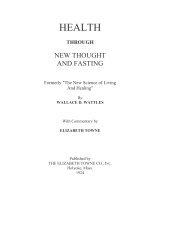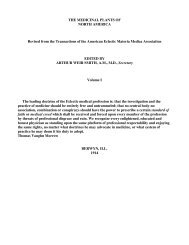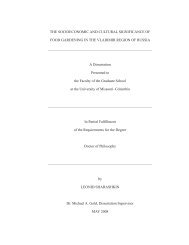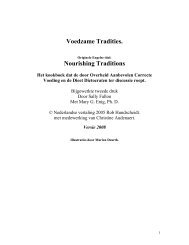FACTORS OF SOIL FORMATION - Midlands State University
FACTORS OF SOIL FORMATION - Midlands State University
FACTORS OF SOIL FORMATION - Midlands State University
You also want an ePaper? Increase the reach of your titles
YUMPU automatically turns print PDFs into web optimized ePapers that Google loves.
mantles, etc., are soils, unless they are being deposited under the very<br />
eyes of the observer.<br />
Soil Maturity and the Concept of Soil Equilibrium.—Marbut (12)<br />
defines a mature soil as one "whose profile features are well<br />
developed." This definition is strictly morphological and may be<br />
applied directly in the field. Among students of soils, one frequently<br />
encounters a second definition that is enjoying increasing popularity.<br />
It rests on dynamic rather than morphological criteria and may be<br />
expressed as follows: "mature soils are in equilibrium with the<br />
environment." In this case, emphasis is not placed on profile<br />
descriptions but on soil-forming processes. More specifically, the<br />
concept has some bearing on the factor time in soil development. It<br />
alludes to the familiar equilibrium idea employed by chemists and<br />
physicists. It will prove profitable to analyze the equilibrium concept<br />
of soil maturity in the light of time functions.<br />
In the first place, it should be kept in mind that not all soil<br />
components approach "maturity " at the same rate. In practice only a<br />
few soil characteristics are taken into consideration when questions<br />
pertaining to soil maturity are to be decided upon. They are, in the<br />
main, soil reaction, organic matter, lime horizon, clay accumulations,<br />
ortstein, or, more generally, the magnitudes of illuvial and eluvial<br />
horizons. Obviously, we may be dealing with partial equilibria only;<br />
the rest of the soil mass may still undergo further changes. In<br />
Hissink's carbonate curve of Dutch polders, the value of calcium<br />
carbonate becomes zero at t = 300 years; yet the remaining soil<br />
properties continue to vary with time.<br />
In the second place, we need reliable equilibrium criteria. How<br />
are we going to decide whether or not equilibrium has been reached?<br />
In a purely formalistic manner, we may postulate that a soil, or, more<br />
specifically, a soil characteristic s, is in equilibrium with the<br />
environment when its indicatrix no longer changes with time. The<br />
component of the system is then at rest or stabilized. In<br />
mathematical parlance, one would write<br />
where ∆ s denotes a change in a soil property and ∆ t a time interval.<br />
This definition is restricted to the soil as a macroscopic system. It<br />
disregards the behavior of individual atoms and molecules such as<br />
thermal agitation and Brownian movement, which never cease.<br />
Applying the above criterion to soil-property-time functions,<br />
equilibrium would be reached when the curves become and remain<br />
flat, an indication that the rate of change is zero (Fig. 25a). It does not<br />
necessarily follow that the soil characteristic is at an absolute<br />
standstill, for, if we choose ∆ t sufficiently large, daily or seasonal<br />
fluctuations would not affect the average slope of the curve (Fig.<br />
256). Tamm's curves, and Hissink's calcium carbonate curve might be<br />
cited as examples of functions that reveal equilibrium in regard to<br />
certain soil characteristics.<br />
A word might be said about the choice of time scales. For<br />
absolute evaluation, the year, or any multiple of it, appears to be the<br />
appropriate unit. Since certain soils reach maturity much more quickly<br />
than others, it may become desirable, for purposes of comparison, to<br />
use relative time units, e.g., fractions of maturity ages (Fig. 26).<br />
Instead of speaking of young and old soils, one would use terms like<br />
"immature," "mature," or "degrees of maturity" ("one-half mature,"<br />
etc.).
















